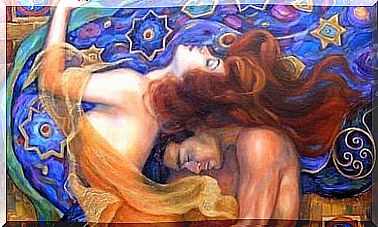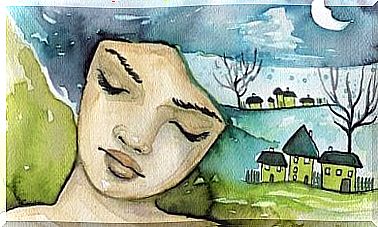The Symptoms, Causes And Treatment Of Cyclothymic Disorder

The primary hallmark of cyclothymic disorder is a state of mind that fluctuates in a chronic manner. We all know someone who has huge mood swings. In a matter of days they turn from sadness to joy. Well, maybe these people suffer from cyclothymic disorder.
The mood of a person with cyclothymic disorder fluctuates between states of dramatic “happiness” and states of depression. In other words, there is a noticeable change in mood that most people do not consider “normal”.
It is important that we distinguish between a cyclothymic disorder and a bipolar disorder. This last disorder is after all more serious because the symptoms are worse here. In cyclothymic disorder, the patient does not experience episodes that meet the criteria for a depressive, manic, or hypomanic episode (DSM-V).

Criteria for Diagnosing Cyclothymic Disorder
The DSM-V defines the following criteria for diagnosing this condition:
A. Presence of numerous episodes of hypomanic and depressive symptoms that do not meet the criteria of a major depressive episode over a period of at least two years.
Note: In children and adolescents, the duration of this episode is at least one year.
B. During a period of two years or more (1 year for children or adolescents), the person has never stopped showing symptoms for more than two months in a row.
C. No major depressive episode, manic episode, or mixed episode occurred in the first two years.
Note: After the first two years of cyclothymic disorder, manic or mixed episodes may occur on top of cyclothymic disorder. In this case, the diagnosis is both cyclothymic disorder and bipolar I disorder. Or, the individual may be experiencing major depressive episodes (in this case, the diagnosis is cyclothymic disorder and bipolar II disorder).
D. Criterion A symptoms are not explained by the presence of schizoaffective disorder. Also, no schizophrenia, schizophreniform disorder, delusional disorder, or any unspecified psychotic disorder supersede the cyclothymic disorder.
E. The symptoms are also not due to the direct physiological effects of a substance (a drug or medication, for example) or a medical condition (hyperthyroidism, for example).
F. The symptoms cause significant clinical discomfort or impairment in social, occupational, or other important areas of the individual’s activity.

Diagnostic Features
As we mentioned at the outset, cyclothymic disorder consists of a fluctuating change in an individual’s mental state. It includes numerous periods of hypomanic symptoms and periods of depressive symptoms that are distinct from each other. Hypomania means that the person is ecstatic but his moods do not reach the manic level. It does cause irritability and mild compulsive postures.
The symptoms of hypomania usually pass unnoticed. This is primarily because the patient feels stable. Second, it doesn’t always cause a noticeable decline at work, in the family, or in the social environment.
The diagnosis is even more complicated. Because you can confuse hypomania with just “being happy” or a mild form of hyperactivity. On the other hand, mania is described as a counterbalance to depression. The patient is then euphoric and entranced.
In a cyclothymic disorder, the depressive symptoms are also insufficient in number, severity, generality or duration. They therefore do not meet the criteria for a depressive episode. The diagnosis of cyclothymic disorder is made only if the criteria for depressive, manic, or hypomanic episodes are not met. This is very important as it differentiates this disorder from bipolar disorder.

The development and course of cyclothymic disorder
Cyclothymic disorder usually begins in adolescence or early adulthood. Scientists sometimes find that temperament reflects a predisposition to other bipolar disorders. The onset of cyclothymic disorder is usually gradual. But the progression is stubborn. In addition, there is a 15 to 50% risk that a patient with cyclothymic disorder will subsequently develop bipolar disorder.
The hypomanic or depressive symptoms may also begin to appear in later adulthood. In order to make a correct diagnosis of a cyclothymic disorder, one must clearly distinguish it from bipolar disorder and the associated disorders that are a result of another medical condition (multiple sclerosis, for example). The cyclothymic disorder starts in children on average at the age of 6.5 years.
In summary, we can say that cyclothymic disorder is the little brother of bipolar disorder. In this disorder, there is a marked change in mood, to the extent that it is no longer normal but not as dramatic as in bipolar disorder.
Works Cited
American Psychiatry Association (2014). Manual for the Classification of Mental Disorders (DSM-V). Boom publishers Amsterdam.









